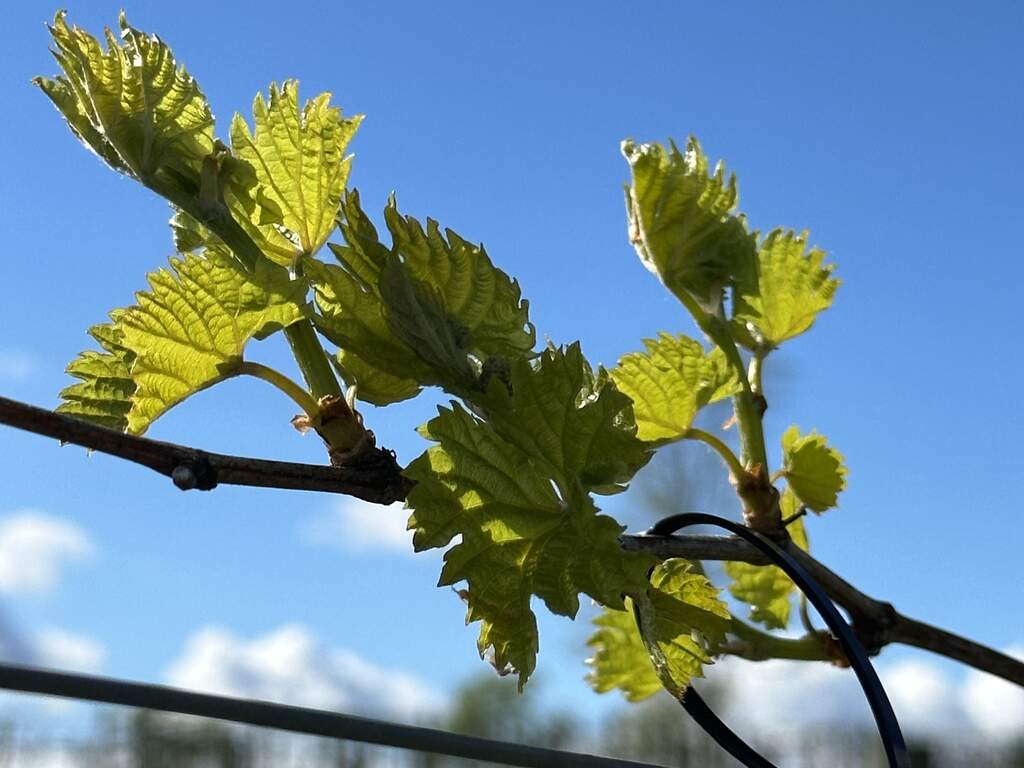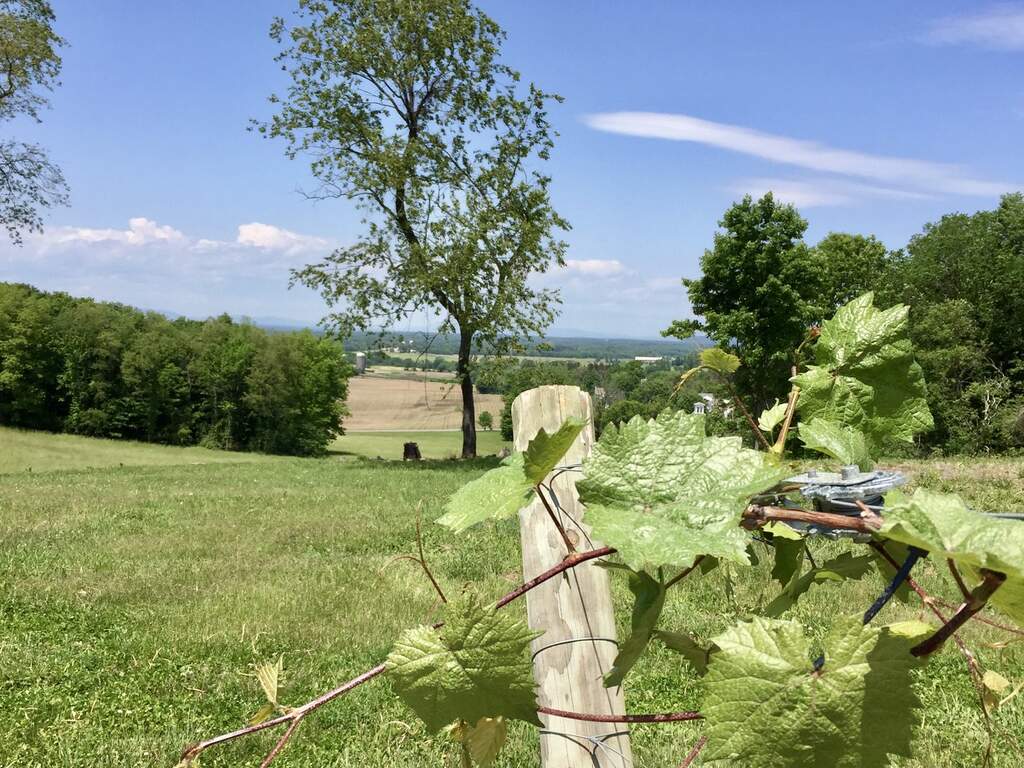Vineyard Renewal Update

On the early morning of May 18, 2023, temperatures dropped and we experienced a couple of hours of 31 degrees weather. This frost event hit vineyards throughout the Northeast with some areas experiencing temperatures of 28 degrees or lower. Luckily, we had very little bud and shoot damage. Some shoots in the lowest part of the vineyard, on the south edge, where cold air collects exhibited a few signs of frost - leaves on the shoots get limp then turn brown. We believe we survived the frost incident because of good air drainage from the hill top location of our vineyard and no small measure of luck.
If we get a hard frost after bud break we can expect to get a reduced crop. Grapevines have three-part buds - primary, secondary and tertiary. If we lose the primary buds due to a hard frost, the secondary buds will push and can produce a crop. Usually the secondary buds are about half as fruitful as the primaries. If the secondary buds get frosted, the tertiary buds will push, but these buds are only minimally fruitful. Their purpose is to save the vine for another year. If the temperature gets well below freezing for an extended period of time the whole bud could die and the season is lost. Strong wind events can also cause damage, or snap off, the young shoots. We're constantly checking our weather app for any sign of a frost or windy conditions after bud break. We don't want to think about a summer hail storm. Yet, we can't really do anything about the weather, so we may as well just enjoy the renewal ride!

After winter pruning from mid-January through early April we tie up new cordons to the trellis to support the new year’s growth. Then after bud break in early May our crew starts shoot thinning and suckering. That's where we are now. Yes, we have too many shoots and we need to take some off. Limiting the numbers of shoots on each cordon ensures optimal fruit load and improves the quality of the grape clusters. We also swipe off the suckers, or unwanted shoots, that sprout from the trunks of each vine. We don’t want those shoots to suck energy from the shoots that will bear fruit. The object of our vineyard work now is to set the vineyard up for an autumn crop that emphasizes quality over quantity.
Spring renewal is an exciting time of year in the vineyard. The grasses turn green, the trees leaf out and the grapevines awaken from their long winter nap to start a new vintage. We walk the vineyard checking for vine health and new growth. In the afternoon, as the sun sets in the west, the green shoots are back lit and glow with warm shades of green. Spectacular - feeling lucky!
